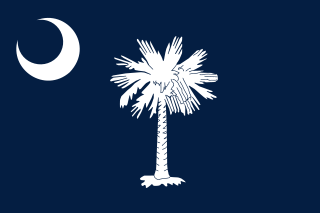
The Great Valley, also called the Great Appalachian Valley or Great Valley Region, is one of the major landform features of eastern North America. It is a gigantic trough—a chain of valley lowlands—and the central feature of the Appalachian Mountain system. The trough stretches about 1,200 miles (1,900 km) from Quebec to Alabama and has been an important north-south route of travel since prehistoric times.

The Ridge-and-Valley Appalachians, also called the Ridge and Valley Province or the Valley and Ridge Appalachians, are a physiographic province of the larger Appalachian division and are also a belt within the Appalachian Mountains extending from southeastern New York through northwestern New Jersey, westward into Pennsylvania and southward into Maryland, West Virginia, Virginia, Kentucky, Tennessee, Georgia and Alabama. They form a broad arc between the Blue Ridge Mountains and the Appalachian Plateau physiographic province. They are characterized by long, even ridges, with long, continuous valleys in between.

U.S. Route 25 is a north–south United States highway that runs for 750 miles (1,210 km) from Brunswick, Georgia, to the Ohio state line in Covington, Kentucky.
The Augusta and Knoxville Railroad (A&K) was a railroad company that operated on 66 miles (106 km) of track between Augusta, Georgia, and Greenwood, South Carolina, from 1882 to 1886. It was merged with three other companies to form the Port Royal and Western Carolina Railway, which was reorganized in 1896 as the Charleston and Western Carolina Railway.

The Episcopal Diocese of Upper South Carolina (EDUSC) is a diocese in The Episcopal Church.
Pickens Railway is a shortline railroad that has operated on two separate divisions in the Upstate Region of South Carolina:

Appalachia's geography presents special challenges to transportation. In Europe, while mountain ranges presented challenges to transport, they could mostly be avoided. In North America, however, the Appalachian Mountains presented a barrier that could not be easily out-flanked. Initially, European settlers found gaps in the mountains, among them the Cumberland Gap and the Wilderness Road.
Alexander Alan Arthur was a Scottish-born engineer and entrepreneur active primarily in the southeastern United States in the latter half of the 19th century. Flamboyant, charismatic, and energetic, Arthur used his prominent American and European financial connections to fund numerous business ventures, most of which were overly ambitious and ultimately failed. A proponent of economic advancement in what became known as the New South, Arthur played a primary role in the development of the Cumberland Gap area, and in the course of his endeavors established the cities of Middlesboro, Kentucky and Harrogate, Tennessee. The community of Arthur, Tennessee, is named for him.
Knoxville, Cumberland Gap and Louisville Railroad (1888–1889) was a railroad which went across the U.S. state of Tennessee and into Kentucky. It was built in the late 1880s and used for industrial purposes.
The Asheville and Spartanburg Railroad was a Southern United States railroad that served South Carolina and North Carolina in the late 19th century and early 20th century.
The Spartanburg and Asheville Railroad was a Southern United States railroad that served South Carolina and North Carolina in the years after the American Civil War.

Horse Creek Valley is a geographic area along Horse Creek, a tributary of the Savannah River. It lies within present-day Aiken County, South Carolina. The area is alternately referred to as "Midland Valley". Rising near Vaucluse, South Carolina, Horse Creek enters the Savannah two miles downstream of downtown Augusta, Georgia. Other communities along Horse Creek include Graniteville, Warrenville, Gloverville, Langley, Burnettown, Bath, and Clearwater. While Horse Creek itself is rather insignificant, its potential for water power led to early examples of Southern industrialization, including a textile mill at Vaucluse (1830) and William Gregg's Graniteville Mill (1845). The textile industry continued to play a primary role until the Graniteville Train Derailment and final closure of the Graniteville Mill in 2006.
Launched in 2012, The Aiken Railway is a Short Line Railroad operating 19 miles of track leased from Norfolk Southern in Southwestern South Carolina, in the United States. The leased track consists of 12.45 miles between Warrenville and Oakwood, SC, and 6.45 miles between Aiken and Seclay, SC. The Aiken Railway is a wholly owned subsidiary of Western Carolina Railway Service Corporation which also owns the Greenville & Western Railway.








